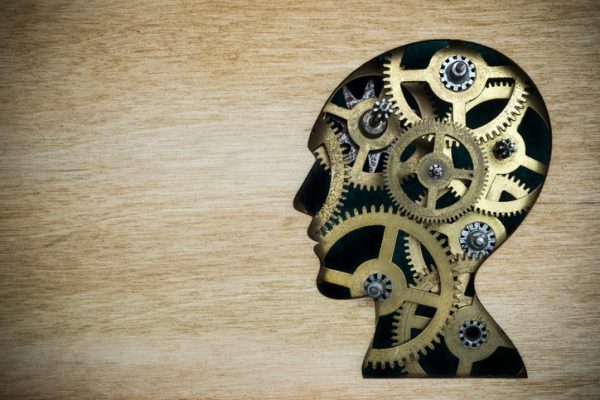
BrainStorm Cell Therapeutics received FDA feedback last year flagging deficiencies in the clinical data for its experimental amyotrophic lateral sclerosis therapy that suggested a new trial might be needed. The company didn’t conduct that study and instead recently submitted an application seeking regulatory approval. The FDA took another look and sent it back as incomplete.
BrainStorm disclosed the FDA “refuse-to-file” letter on Thursday. Such letters are short of a rejection of a drug. Instead, they notify a company that a marketing application lacks enough information for a full review and more data are needed. In most cases, that means a company must run another clinical trial.
Refuse-to-file letters are considered confidential communication between the agency and a company. Recipients of these letters usually stay tight lipped about the details. Beyond announcing the correspondence, New York-based BrainStorm did not disclose what the FDA said, other than that the company can request a meeting to discuss the matter. BrainStorm intends to do so, CEO Chaim Lebovits said in a prepared statement.
BrainStorm’s ALS treatment, NurOwn, is made by harvesting a patient’s own stem cells. In a lab, mesenchymal stem cells are isolated and multiplied. Administered as an injection into the spine, these cells release proteins that stimulate growth. BrainStorm contends these proteins can support neurons and improve neurological function lost to the neuromuscular disorder.
The Phase 3 test of NurOwn evaluated 189 ALS patients who were randomly assigned to receive the BrainStorm therapy or a placebo. The main goal was to measure at 28 weeks the rate of decline according to a scale used to assess physical function in ALS patients.
The refuse-to-file letter comes nearly two years after BrainStorm announced preliminary results showing the therapy did not meet the main goal of the clinical trial. Despite the clinical trial miss, the company pointed to what it said was a clinically meaningful treatment response in a subgroup of patients. Months later, BrainStorm said the FDA recommended the company generate additional clinical data to support a biologics license application. But according to BrainStorm, the FDA said its recommendation does not preclude the company from submitting an application.

A Deep-dive Into Specialty Pharma
A specialty drug is a class of prescription medications used to treat complex, chronic or rare medical conditions. Although this classification was originally intended to define the treatment of rare, also termed “orphan” diseases, affecting fewer than 200,000 people in the US, more recently, specialty drugs have emerged as the cornerstone of treatment for chronic and complex diseases such as cancer, autoimmune conditions, diabetes, hepatitis C, and HIV/AIDS.
In March of 2021, the FDA took the unusual step of commenting publicly about a therapy that at the time was not even under regulatory review. The agency said NurOwn did not meet study goals. While the FDA did not mention the subgroup analysis highlighted by BrainStorm, the regulator said it would work with the company if it chose to conduct another clinical trial. Instead, BrainStorm has continued to focus on the data it has in hand. The company has also produced new analyses of these data.
BrainStorm presented new biomarker analyses last month during the annual research symposium hosted by the organization ALS ONE. In the presentation, BrainStorm Chief Development Officer Stacy Lindborg noted that unlike the pivotal studies for other ALS drugs, NurOwn’s Phase 3 study included patients with more advanced disease. That makes it harder to assess patients due to what the company describes as a “floor effect.”
The ALSFRS-R, the rating scale used to assess ALS patients, tallies scores from 12 measures of function, each of them scored from 0 to 4. The lower the number, the less ability a patient has to perform a particular function. Brainstorm noted that the average score of participants in the NurOwn study was five points lower than the average in the pivotal study for Relyvrio, Amylyx Pharmaceutical’s recently approved ALS drug. The company said those lower scores make it harder to assess NurOwn’s effect on patient decline because patient scores are already near the bottom of the scale, the floor.
BrainStorm contends its data suggest NurOwn may have an effect on patients with less advanced disease. To support that position, the company points to biological indicators in cerebrospinal fluid related to inflammation and degeneration, as well as protection. Analyzing these biomarkers was a secondary goal of the Phase 3 study. In its ALS ONE presentation, BrainStorm said its analysis showed treatment with NurOwn over 20 weeks led to reduction in neuroinflammation and neurodegeneration while at the same time increasing neuroprotection. The company added that these biomarkers are not impacted by the floor effect.
The biomarker statistical analysis plan was submitted to the FDA before the trial was unblinded, BrainStorm said in the presentation. It’s unclear what the FDA thinks about it. When a clinical trial misses its main goal, the agency usually frowns on “data dredging” to try and pull success out of a failure. The FDA might also think the biomarker data are insufficient. In its 2021 statement about the NurOwn trial, it noted that that the study failed to meet secondary as well as primary goals. If BrainStorm wants the focus be on biomarkers, the FDA might ask the company to generate more biomarker data from another clinical trial.
BrainStorm may offer more detail next week. On Nov. 14, the company is scheduled to report financial results for the third quarter of this year.
Photo credit: nambitomo, Getty Images













